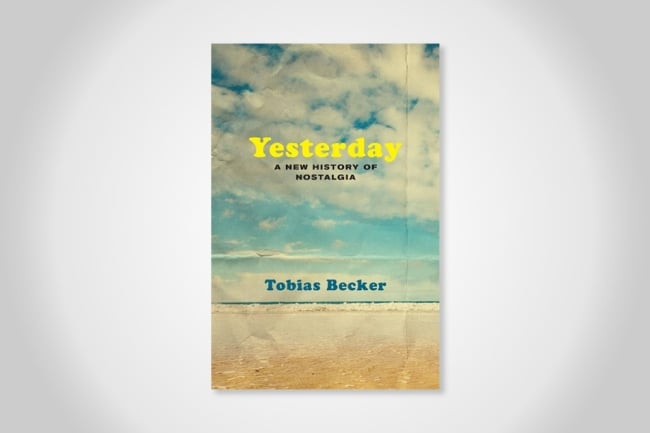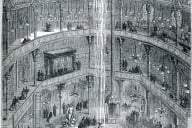You have /5 articles left.
Sign up for a free account or log in.

Harvard University Press
Not long after Ronald Reagan first became president, the poet and musician Gil Scott-Heron recorded a single called “‘B’ Movie” that attributed the Gipper’s appeal to various factors, but most of all to nostalgia. This was a commonplace even at the time, but Scott-Heron’s spoken-word performance expressed it in a pithy caricature that’s held up well over time. Americans “want to go back as far as they can,” he said, “even if it’s only as far as last week.”
The tendency was older than the artist probably realized. Writing in the Journal of the History of Ideas in 1961, Arthur P. Dudden pointed out that a yearning to return to “things as they once were, or, more importantly, a preference for things as they are believed to have been” has ebbed and flowed in American public life from at least the 18th century onward.
But it was typically constrained by a certain degree of compulsory optimism: progress was inevitable, so no wallowing! “Except in instances of sentimental reminiscing therefore, as say among old soldiers, nostalgic utterances reveal an emotional frame of mind which to other persons might better be concealed as unmanly or unpatriotic if not defeatist or downright un-American,” Dudden explained in what seems like a very 1961 manner.
Today the raw materials for a long retreat into the comforts of a familiar past are always readily at hand. Tobias Becker’s Yesterday: A New History of Nostalgia (Harvard University Press) quotes the assessment of one cultural commentator: “Never before have people had nearly unlimited access to what has gone before, been able to call it up and play it back and relive it again and again.” (That’s from “The Re Decade,” an article by Tom Shales published in Esquire in 1986, when you still had to leave home to rent a movie.)
Becker, a guest professor at Freie Universität Berlin, notes that scholars have been slow to engage with the history or political significance of the emotions. Nostalgia would seem an obvious exception. Besides the paper from 1961 cited above, there is the substantial chapter that Christopher Lasch devoted to nostalgia in The True and Only Heaven: Progress and Its Critics (W. W. Norton, 1991). Beyond incorporating elements of these and other earlier analyses, Becker’s Yesterday takes on a broadly comparative approach by looking at French and German as well as U.S. and British history. Focusing especially in the last half of the 20th century, he brings the discussion up to the 2010s.
The range of social, political and cultural phenomena covered is impressive and the author’s reconstructions of them absorbing. His subjects include family-history research, the sitcom Happy Days, revivals of musical subcultures, Reagan’s “Morning in America” commercial, Margaret Thatcher’s unabashed enthusiasm for Victorian values, retro chic in fashion, Ostalgie (a sentimental feeling about East German life), battle re-enactments, campaigns to preserve buildings …
The breadth of examples might seem like evidence of the power and mutability of nostalgic yearning. But here the author’s perspective turns oblique and not a little contrarian. He argues against nostalgia as a useful or valid explanation for much of anything in public life. All the listed examples (and more) are typically labeled as nostalgic, expressing a desire, more or less widespread, for the comforts of imagined simplicity.
But Becker takes the act of labeling as itself a kind of projected emotion—one that is primarily negative: dismissive, condescending or defensive. At least when applied to anything larger than an individual’s mood, the concept of nostalgia becomes an impediment to understanding, for it is simplistic and muddled at best.
“Nostalgia” began as a diagnostic term in the 17th century, referring, Becker says, to “a new, pathological, and, in some cases, even lethal form of homesickness” and remaining primarily a bit of medical jargon until fairly recently. He dates the acceptance of “its new, temporal connotation” to its first appearance in dictionaries in the 1960s, suggesting that it “only gained widespread usage in intellectual thought and everyday language in the 1970s.”
This is off by at least several decades, if I may go by a few minutes of puttering around on JSTOR. The specific medical usage remains prominent in the late 19th century, when it is discussed as a factor in suicides among soldiers. But a passing mention of Odysseus’s nostalgia from around 1900 suggests that the word was reasonably familiar to nonmedical readers at a certain level of education, and by 1920 it appears mainly in contexts where it can only refer to painfully poignant memory in general. I have not trawled through old dictionaries, but the now-familiar sense of nostalgia was prevalent, and likely predominant, well before Alvin Toffler introduced the concept of the “wave of nostalgia" in Future Shock (1970).
And it is the mighty power of Toffler’s sweeping generalizations that Becker undoubtedly has in mind in orienting his analysis. The “nostalgia wave” is one of those assessments of society that then becomes a self-fulfilling prophecy. For Toffler’s part, the craving to return to some more wholesome or satisfactory period made sense among people stressed to a breaking point by the rapidity of technological and social change and the incessant “information overload” (another Tofflerism).
Gore Vidal was not impressed: the nostalgia wave was “all made up by the media,” he said in 1971. “It’s this year’s thing to write about.” Becker documents that the idea had a much longer life than that—and it did not take long for it to be taken up by British, German and (a bit later) French media.
Toffler had, in effect, launched a viral concept (as nobody put it back then) and done so by characterizing nostalgia as revealing deep problems in the society that indulged in it. It could be understood as a retreat from reality and the opportunities and responsibilities it presses upon us. Or as an admission of creative bankruptcy, borrowing everything from the past while leaving nothing for the future. Or as an obstacle to understanding the past in its actual complexity, replacing it with an endless parade of kitsch facsimiles.
Not that Toffler was the source any of these perspectives. All of them took shape in previous decades, and they were echoed, with varying degrees of consistency and complexity, by plenty of people who never read Future Shock.
Becker’s point is that the overwhelming effect of their diffusion was polemical. Identifying a movement or public figure as prone to nostalgia is far more often an accusation than a compliment. Becker’s close look at the multitude of developments so tagged is mostly offered in the spirit of rescuing so-called nostalgic phenomena from pejorative implications—or at least restoring the nuances flattened by clichéd thinking.




